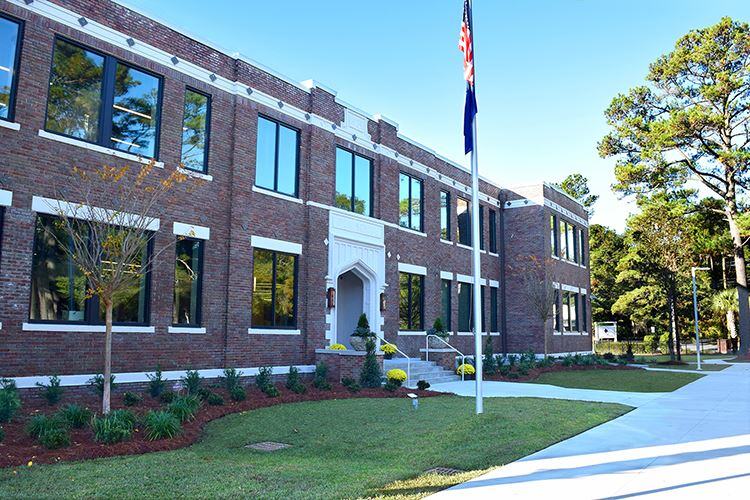Every year, high school students fall off track to graduate due to seemingly small but critical issues: scheduling errors. Scheduling errors occur when a student's course plan does not align with graduation requirements, whether due to an oversight, incorrect placement, or an unavailable course. These mistakes are more common than many realize—according to Panorama's data, 25% of all students start high school with at least one scheduling error.
These missteps can add up fast. In fact, our same data shows that each high school student had an average of 4.3 errors on their transcript or class schedule during the 2023-2024 school year—averaging out to 3,000 errors per high school.
The reality is that errors are inevitable. With thousands of students and complex graduation requirements, even the most meticulous scheduling processes can leave gaps. But what separates high-performing districts is not the absence of errors—it’s having a clear, proactive system in place to catch and correct them before they become a roadblock to graduation.
In fact, many of these errors can be caught and corrected before the school year even begins. We find that educators reviewing student schedules between May and August identify the most errors, giving schools a critical window to make adjustments. But how widespread is this issue, and what other factors contribute to students falling behind?
At Panorama, we analyzed our own data to identify the most common barriers to on-time graduation—and the results highlight key opportunities for schools to intervene early.
Methodology Overview
To understand why students may not graduate on time, we analyzed data from a diverse range of districts that use Panorama Pathways to audit, review, and correct high school transcripts and schedules. Our review spanned the 2022-2023 and 2023-2024 school years, allowing us to uncover trends and shifts over time.
Since our findings are based on aggregated data, we focused on overarching patterns rather than differences between individual districts. This means that while some figures—such as the total number of scheduling errors—may vary by district size, the key takeaways highlight system-wide challenges and opportunities for improvement.
Here’s what we found.
Top Five Flagged Errors in Panorama Pathways That Impact On-Time Graduation
Panorama Pathways automates transcript and scheduling audits by quickly flagging potential issues and compiling them into a single, actionable report. These flags help schools efficiently identify and support students who may be off track in their post-secondary pathways—whether aiming for graduation, career readiness, or technical education.
For this report, we analyzed Panorama Pathways data to uncover the most common flags—such as excessive credits or scheduling errors—that can disrupt on-time graduation.
Our analysis uncovered five common scheduling and transcript issues that can throw students off track for graduation. These mistakes happen more often than you’d think—but with the right systems in place, schools can catch and fix them before they become a bigger problem.
.png?width=2806&height=1963&name=Blog%20Graphs%20-%20Top%205%20Barriers%20to%20Graduation-01%20(1).png)
1. Enrolled in a Class They Already Passed
Sometimes, students are mistakenly scheduled into a course they’ve already completed—a mistake that accounted for 43% of all scheduling errors. Not only does this waste valuable time, but it also keeps them from taking a class they actually need to graduate.
2. Passed a Class but Didn’t Get Credit for It
Even when students do everything right—show up, do the work, and pass—sometimes their transcript doesn’t reflect the credit. This issue accounted for 31% of all scheduling errors. Without correction, missing credits can create an unnecessary roadblock to graduation.
3. Off-Track Senior
Senior year should be about celebrating milestones, not scrambling to catch up. But for some students, missing credits or required courses can put graduation at risk. The good news: identifying these gaps early—before senior year starts—and working with students to develop a clear plan ensures they stay on track to graduate.
4. Excessive Credits
While earning extra credits isn’t necessarily a bad thing, taking unnecessary or duplicate courses can cause students to miss out on classes that actually move them toward graduation. A well-balanced course load matters.
5. Accidentally Scheduled Into the Same Class Twice
It happens—students end up enrolled in the same course twice in one year. This mix-up can take up valuable space in their schedule and keep them from enrolling in other required classes.
Mistakes like these are inevitable, but they don’t have to derail students' paths to graduation. When schools have a plan in place to review schedules and transcripts early, they can catch these issues before they become a problem—and keep students on track for success.
The Critical Window: Fixing Schedule Errors Before the School Year Starts
The months between May and August offer a key opportunity for districts to catch and correct schedule errors before they become bigger issues. Our data shows that most errors were resolved during this time, with an especially big spike in August—either to ensure accurate records for graduating seniors or to make sure underclassmen are scheduled into the right courses at the start of the next school year. Our data also reveals a smaller uptick in January, coinciding with the start of the second semester when counselors review and adjust student schedules.

By proactively reviewing student schedules and transcripts during this window, schools can address missing credits, incorrect placements, and duplicate courses before they impact a student’s path to graduation. Having a clear process in place not only reduces last-minute scrambling but also ensures that every student starts the school year with the courses they need to stay on track.
Supporting Student Success With Smarter Graduation and CTE Tracking
Identifying and correcting schedule errors is just one piece of the puzzle. To truly support students, districts need a system that not only catches mistakes but also proactively tracks progress toward graduation and CTE completion.
That’s where Panorama Pathways comes in. As a leading on-time graduation and CTE program tracking solution, Panorama Pathways helps ensure students are ready for college, career, and life. In working with districts, we’ve seen firsthand how even a single error on a student’s transcript or schedule can stand in the way of graduation, CTE completion, and future opportunities. With the right tools in place, schools can take action early—before small mistakes turn into major roadblocks.







